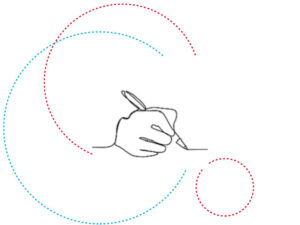On February 9th in Maison du Savoir in Belval, around 40 participants gathered together to listen to the inaugural lecture of Prof. Dr. Luis Leiva on “Computational Modeling of Handwriting Movements”.
After a brief introduction to the history of handwriting, Luis Leiva discussed what is handwriting and what are the most popular theories and computational models of this kind of movements. By using these models, computers can simulate human behaviors and understand their abilities.
Handwriting is primarily a tool for cognitive development and a proxy for cognitive functioning. It teaches the brain functional specialization, integrating tactile sensation, visual information, fine movements, dexterity and thinking in the most efficient way. It also allows us to do time travel, since we go backwards to access long-term memory and recall information, and go forward to envision articulation plans and goals.
Prof. Leiva explained that currently there are a few challenges about computational models, but also there are important opportunities. Overall, modeling handwriting movements is important because data collection and user studies are both time-consuming and expensive. Computational models help researchers to conduct experiments at low risk, thanks to high-quality model-based simulations.
The lecture was followed by a cocktail reception where participants could exchange ideas about the topic.
About Prof. Dr. Luis Leiva : Prof. Dr. Leiva leads the Computational Interaction (COIN) research group of the Department of Computer Science (DCS) and is the current director of the Interdisciplinary Lab for Intelligent and Adaptive Systems (ILIAS) at the University of Luxembourg. He is also the co-founder and former director of technology of Sciling, an SME agency specialized in B2B Machine Learning solutions. His research interests lie at the intersection of Human-Computer Interaction and Machine Learning. His main research area is Computational Interaction, where he combines computational thinking with data-driven models and methods to enable, explain, and support user interaction.
